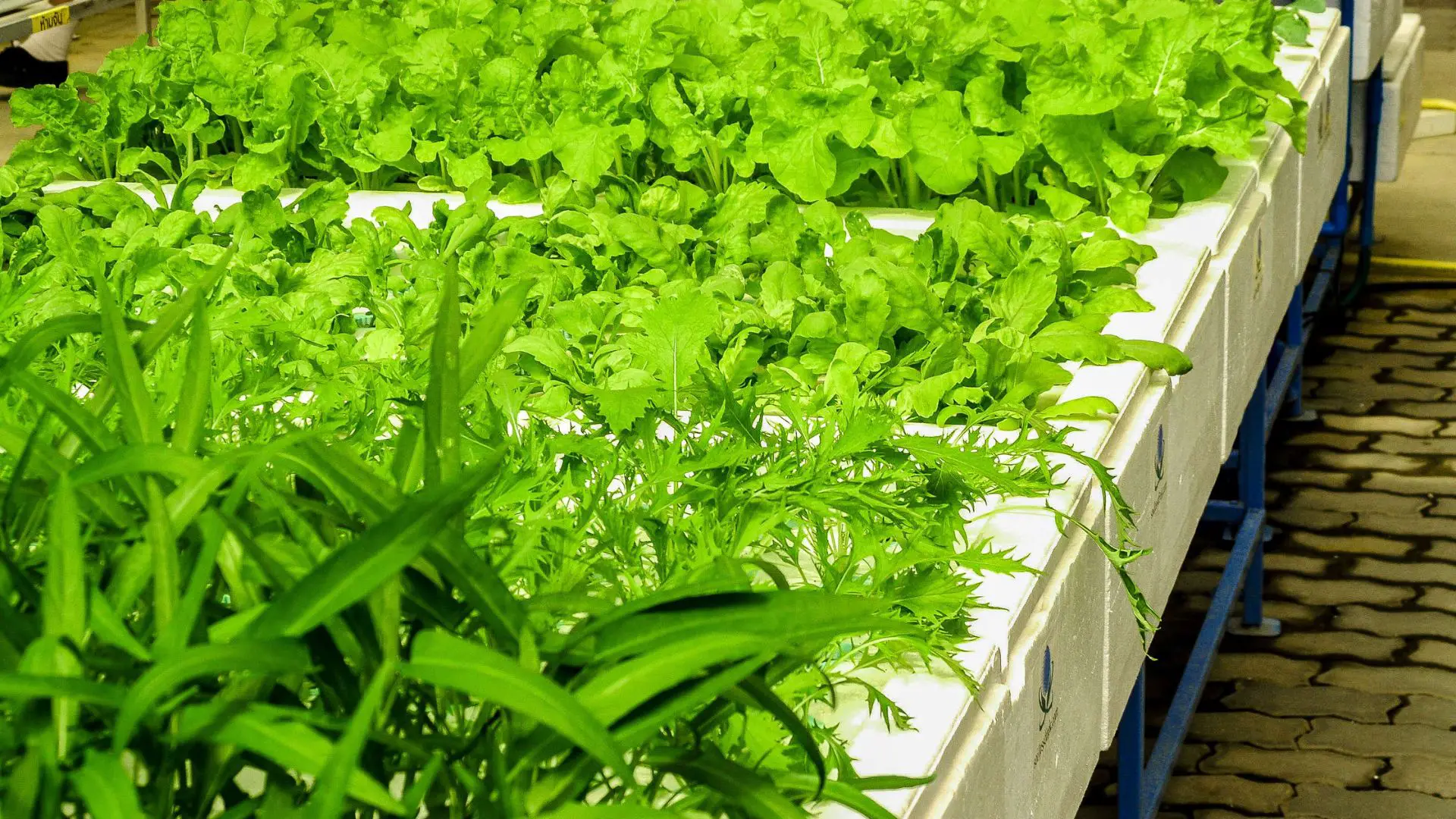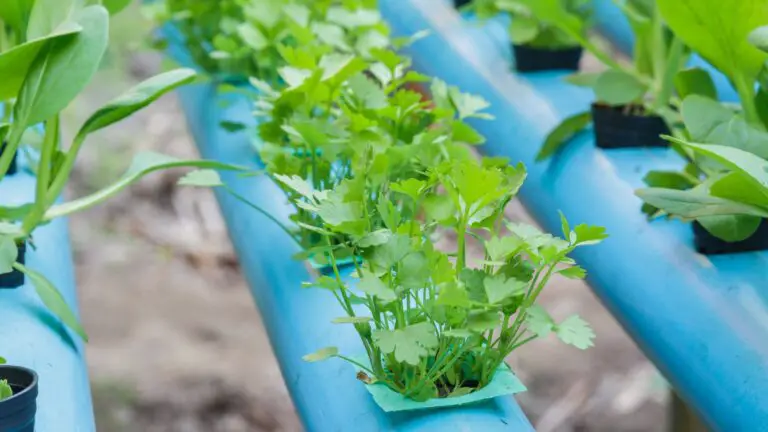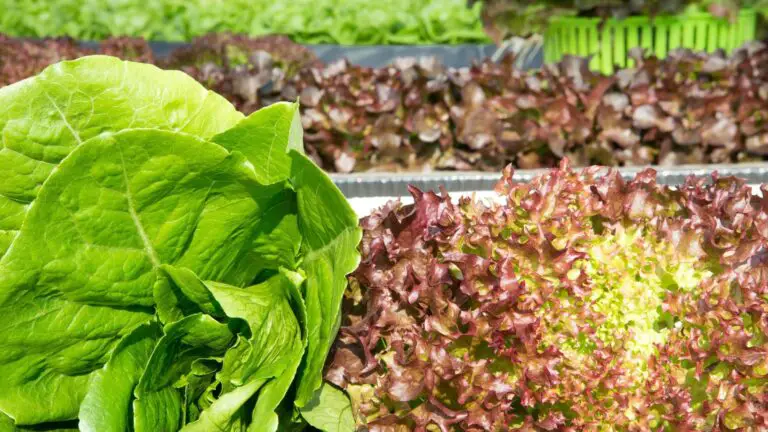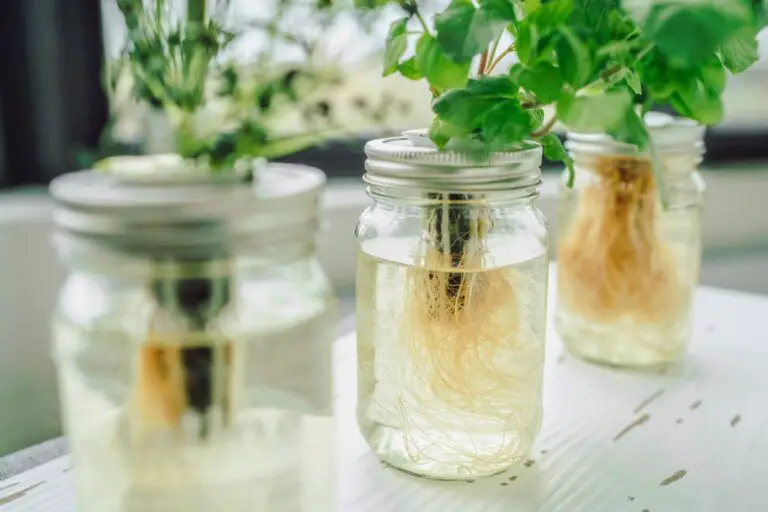Container for Deep Water Culture (DWC) Hydroponics – Easy Guide
Disclosure: Your purchases through our links may earn us a small commission, supporting our site’s ability to provide valuable information to our readers. Rest assured, it won’t impact your price. Thank you for your support.
Deep Water Culture hydroponics is a way to grow plants without soil. It uses a container with water full of nutrients to help plants grow. This method is great for saving space and resources, which is why many people like it.
If you want to set up a DWC hydroponic system, the container you choose depends on whether you’re gardening at home or farming on a large scale. This guide will help you pick the right container, whether you’re a DIY hydroponic gardener or a commercial hydroponic farmer.
What is Deep Water Culture Hydroponics, and Who Can Use It?
In DWC, plant roots hang in water that has lots of nutrients and air. This method is great for many plants and can give you more crops. It uses less substrate since the plants float in water. This method is cheap and works well for small-scale urban farming at home or commercial hydroponics farms.
You can use DWC hydroponics for leafy veggies, herbs, and small fruits like tomatoes and strawberries. Plants grown this way usually have strong roots, which makes the fruits and veggies taste and look better.
How to Choose the Right Container for Your DIY DWC Hydroponics at Home
For home DIY gardens, cheap and easy options like 5-20 gallon buckets or storage bins are good. Here’s how to pick a DWC system container:
- Think about the size of your plants and the space they need.
- Choose a container that’s big enough for your plant’s water and nutrient needs. The container’s size is very important. Small plants like herbs are good in 5-gallon buckets. Bigger plants need larger containers.
This NASA/ADS resource discusses the importance of maintaining appropriate nutrient solution levels in DWC systems, emphasizing the significance of container size and water volume - Pick containers made from strong materials like food-grade plastic or metal. They should last a long time, even with constant water.
- The shape and design of the container matter. They affect how well your plants get nutrients and air. Square or rectangular containers are good for saving space. Round buckets are great for individual plants.
- Ensure the container has a lid to keep water from evaporating to maintain water level.
- For a DIY system, check that everything is attached well and doesn’t leak.
- Other useful features include built-in reservoirs for changing water easily or different compartments for various plants.
- Your budget and space will affect your choice. Plastic buckets, tubs, or bins are good because they’re common and easy to change. Clean your container well before using it.
Following these tips will help you choose the best container for your hydroponic plants.
What Are the Key Points for Commercial DWC Hydroponic Containers
For commercial DWC systems, you need to think about more things. Big farms need larger, stronger containers for many plants. Here’s what to consider:
- Choose big containers for the growth and number of your plants.
- Commercial systems need durable containers that last a long time. It must also be built to prevent corrosion, erosion, or damage.
- Look for features that improve efficiency, like built-in water filtration and aeration systems.
- Custom-built containers can meet specific needs, like multi-level growing or special plants. You can choose the size, shape, and material to fit your goals.
- Long channels or troughs are good for growing many plants in a row.
- Easy cleaning and maintenance are important. Features like removable lids or compartmentalization can save time and money.
- The design of the container helps increase how much you can grow and produce.
Investing in high-quality containers helps your commercial hydroponic farm last longer and grow plants well.
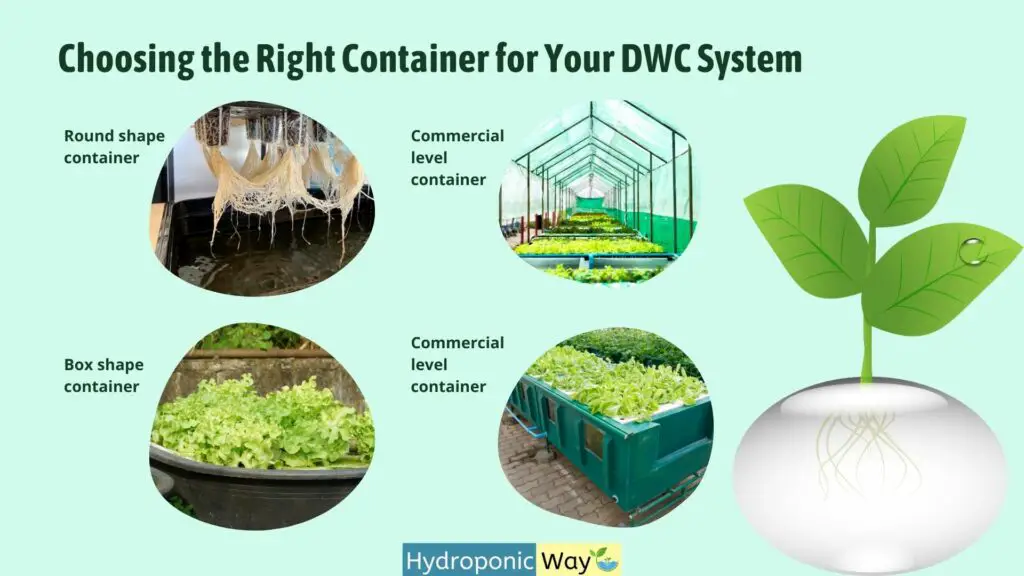
Why Accessibility is Important in Choosing DWC Hydroponics Containers
When choosing your DWC system’s container, easy access is key. You should be able to check on the plant roots and nutrient solution easily. This helps keep your system running well and saves time and resources.
Low-Maintenance Options for DWC Containers
For low-maintenance containers, think about the material, strength, ease of cleaning, and access. Food-grade buckets are great for small or home gardens. They’re cheap, flexible, and easy to clean.
How Container Stability Helps Deep Water Culture Systems
Stable containers are essential. They keep your plants secure throughout their growth. Stable and strong containers, like those made of food-grade plastic, reduce risks and give you confidence in your system.
Scaling Up DWC Hydroponics Systems
You can make DWC hydroponics systems bigger to support more plants. Consider how close your plants will be, the size of the container, and the nutrient circulation system. Larger systems need more pumps, a big reservoir, and air systems. Choose designs that can change to fit your space and plants.
Final Thoughts
Picking the right container for your DWC system is crucial for a successful garden. DIY gardeners can use small buckets and round containers, while commercial farmers need bigger containers and troughs for more plants. The shape and how the container gets air are also important. We hope this guide helps you understand different aspects when choosing the best container for your DWC system.
Thanks for reading!

